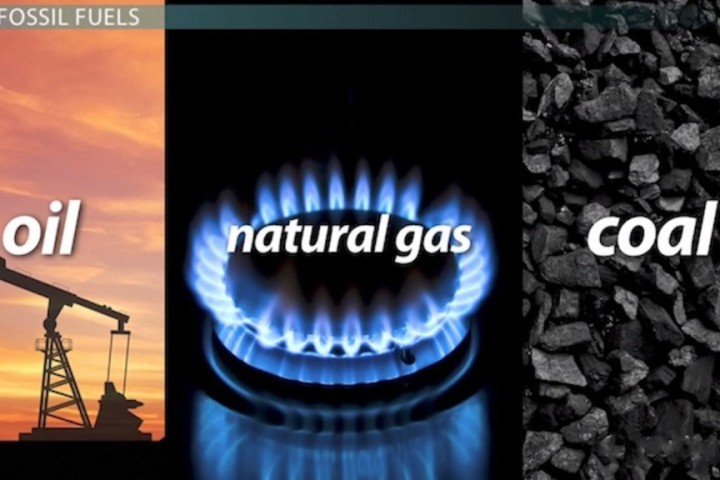Non Renewable Resources

By Sue Lynn Carty
The use of non-renewable resources, such as fossil fuels, is the number one contributor to global warming. Which finite resources are included on this list and what can we do to conserve them?
The Scarcity of Non-Renewable Resources
Non-renewable resources are energy sources that we use and consume faster then nature produces them. Fossil fuels such as coal and natural gas, take centuries to form naturally, and crude oil takes millions of years to form. These resources are not infinite and over time, most experts believe they will cease to exist. Here are some scary facts regarding non-renewable energy according to The Ecologist, based on current worldwide consumption rates :
- The natural gas supply will run out within the next 35 years.
- Within 70 years the world's current oil reserves will be gone - If the current rate of consumption continues for oil, the supply is predicted to run out within the next 14 years.
Not only is the scarcity of these resources a global problem, the resulting pollution of using fossil fuels is as well.
Four Major Limited Energy Sources
There are four non renewable energy sources that are used most often. The first three are fossil fuels. This means that they were formed from the remains of plants and animals eons ago. These fossils fuels can be in a solid, liquid, or gas form.
Oil and Petroleum Products
Oil and petroleum products include:
- Diesel
- Gasoline
- Propane
These substances were once small marine plants and animals. Over a long period of time these plants and animals were covered with sand and silt. The heat and pressure from the added layers created crude oil.
Oil is found in reservoirs, spaces in the earth between rocks. These reservoirs are filled with gallons of yellow to black crude oil. In order to get the oil so that it can be processed, companies must drill for it and extract it. Once the oil is taken out of the ground, it is gone forever. The earth does not replenish the oil.
Natural Gas
Natural gas was formed much like oil, from small plants and animals. Instead of being formed into a liquid like oil, it formed into bubbles of natural gas. These gas bubbles were trapped beneath the rocks in pockets.
Geologists study the earth and the various rock formations. They decide where the best places to drill for natural gas are by using a variety of tools and technologies. Once the drill is in place, the natural gas can be pumped out from the ground and into pipelines.
Some researchers are working on machines called "digesters". These machines can actually digest organic matter and create a form of natural gas.
Coal
Coal is the solid form of the three fossil fuels. It is also the most abundant form in the United States. It was created in the same way as the other two fossil fuels but became a solid mass. Coal must be mined to be removed from the earth. There are two types of mining.
Surface mining makes up about two-thirds of the coal mining in America. Coal that is near the surface is dug out of the ground with special machines. It can be used any time the coal is less than 200 feet underground.
Deep mining is used for deeper coal pockets. Sometimes coal is as much as 1,000 feet beneath the surface of the earth. Mines are created deep in the earth and miners ride elevators down to where the coal is. Once the coal is out of the ground, it is transported to plants to be cleaned and made ready for use.
Uranium
Uranium is the only one of these energy sources that is not a fossil fuel. It is used in nuclear energy plants as well as in other ways. Uranium is a common metal that is found in rocks almost everywhere.
Uranium is minded from open pits, where machine dig huge holes in the ground to extract uranium ore. Some uranium is deeper in the ground and must be deep mined like coal. Like the fossil fuels, once uranium is taken from the earth, it can't ever be replaced.
Not Just Fossil Fuels
When most of us think about non-renewable resources, the first thing we think about is fossil fuels. Though these fossil fuel energy sources are the most widely publicized, there are other resources that are slowly running out such as:
- Aluminum
- Copper
- Silver
- Gold
- Diamonds
Once people mine these materials, they cannot be replaced at a sustainable rate.
Non-Renewable Energy and Pollution
When fossil fuels burn, they release carbon monoxide, nitrogen oxides, hydrocarbons and sulfur oxides into the earth's atmosphere. The combination of nitrogen oxides and hydrocarbons forms smog. This smog, which is clearly visible over large cities, can lead to:
- Lung irritation
- Irritation to the eyes, nose and throat
- Worsen existing respiratory and heart conditions
- Shortness of breath
- Permanent lung damage over time
Aside from air pollution, extracting and transporting oil has, in the past, lead to oil spills and slicks, polluting the waters and damaging the natural environments around the slicks and spills. In addition, strip mining, the extraction method from coal, not only leaves the area barren, but the minerals around the coal itself are acidic. These minerals are left behind after mining, leaving the area completely polluted and preventing the ability for new vegetation to grow.
Global Energy Crisis
Unfortunately, until viable, sustainable and renewable energy sources are developed, the use of non-renewable energy sources remains a necessity. Just as unfortunate, experts predict the coming of peak oil production will happen within the next 30 years. After that occurs, the world oil production is expected to experience a sharp decline. When that happens, it is predicted that the global economy will tailspin into a worldwide recession.
Changing Attitudes
In recent years, consumer's attitudes toward the use of non-renewable energy sources have been undergoing a significant shift. More people are finally beginning to realize that damaging effects non-renewable fossil fuels have on the environment and are beginning to take active measures to reduce their carbon footprint. Many of these activities are easy and don't require a major lifestyle change like:
- Turning off the lights when leaving a room.
- Adding solar panels to homes as an energy source.
- Installing only high efficiency appliances in their homes.
- Recycling - Simply separating out recyclables like paper, cardboard, plastic and glass not only keeps these products out of landfills, but also means that non-renewable energy isn't used to produce more of these products.
- Driving less and participating in carpooling for work and school - the less fuel you use, the less pollution you release into the atmosphere.
- Opting for reusable cloth grocery bags as opposed to disposable paper or plastic bags.
- Buying hybrid gas/electric cars - Plastic is a petroleum byproduct. Although paper is made from trees, some trees that are cut down for the purpose of making paper take anywhere from 25 to 100 years to mature before they can be harvested again. Fortunately, in many countries there are laws governing sustainable forestry.
- Using Compact Florescent Lightbulbs (CFL) in their homes - CFL bulbs use up to 75% less electricity than traditional incandescent bulbs.
All these things and more reduce the use (and therefore the need) for non-renewable energy sources.
